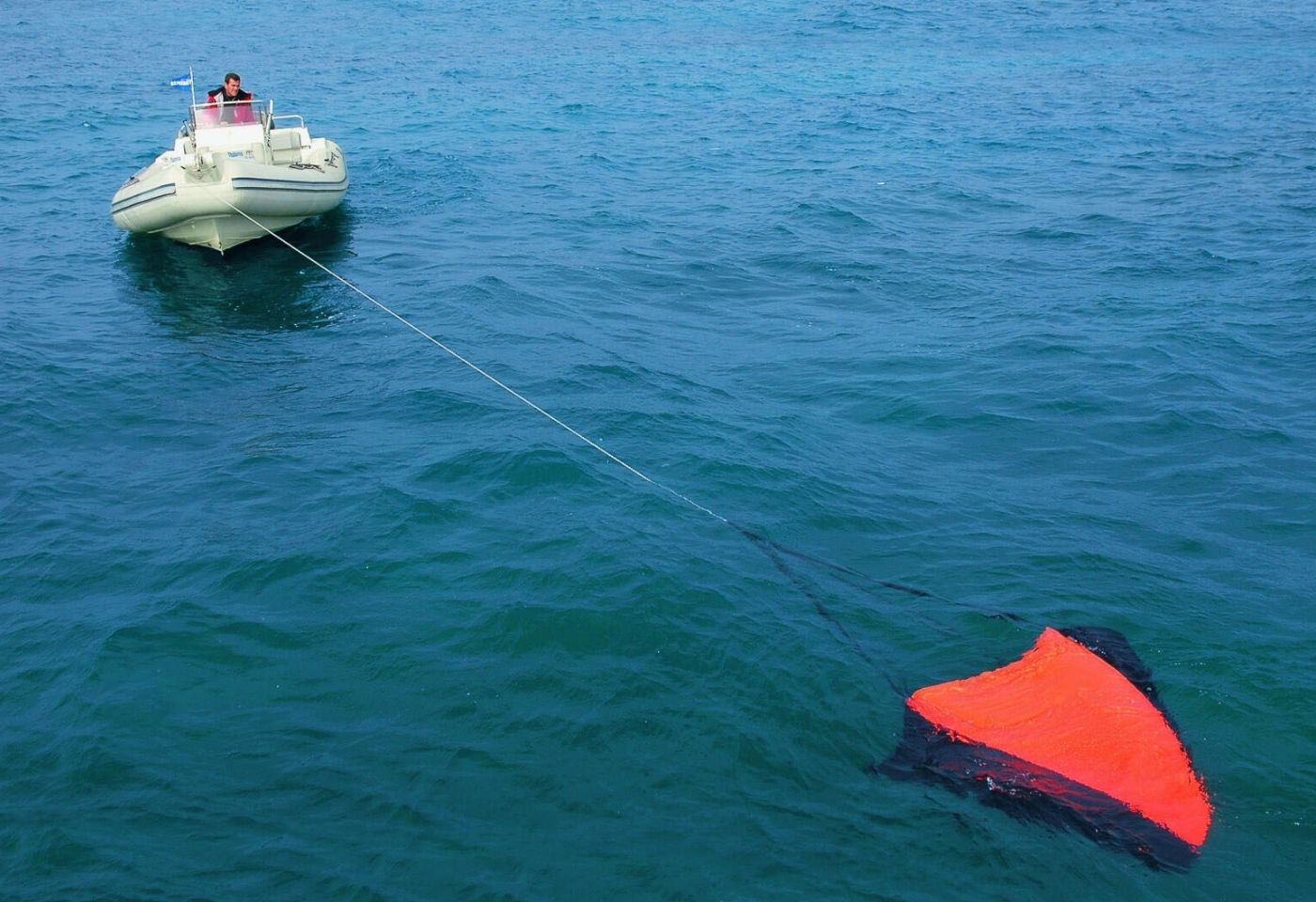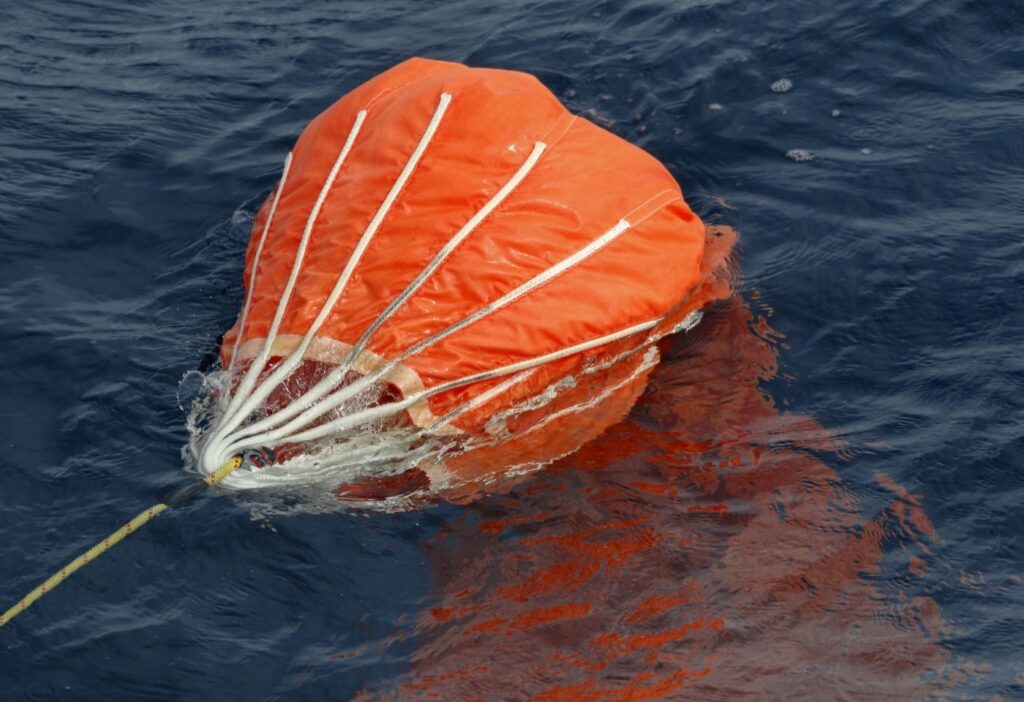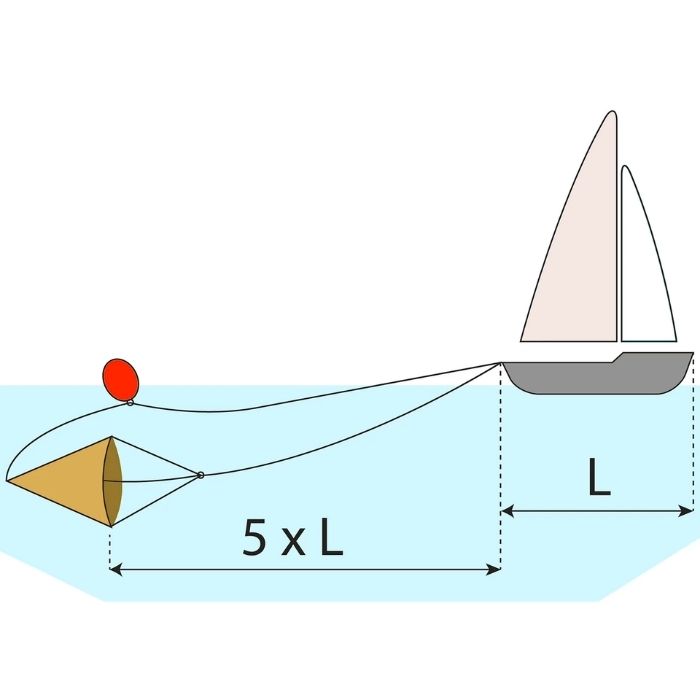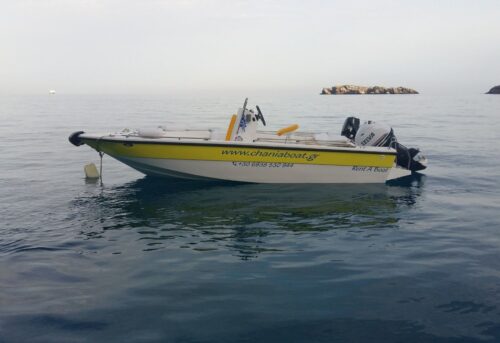
When you’re out at sea, unexpected engine failure or weather changes can turn a relaxing trip into a stressful situation. That’s where the floating anchor comes in — a simple but essential piece of emergency equipment on every boat.
In this guide, you’ll learn how to use a floating anchor, when to deploy it, and how it differs from your regular metal anchor. This knowledge is especially important for renters and beginners who want to feel confident and safe on the water.
Contents
ToggleWhat Is a Floating Anchor?
Also called a sea anchor or drift anchor, this tool is designed to help control your boat’s movement when drifting. It’s not made of metal — it’s a fabric or cone-shaped parachute that creates drag in the water.
Unlike a regular anchor that holds your boat in place, a floating anchor slows your drift and points your boat into the wind or waves, helping prevent dangerous sideways drifting.

When and Why to Use It
The floating anchor should be used in emergency situations, especially when:
- Both the main and auxiliary engines have failed
- You’re far from shore and in deep water where a regular anchor can’t reach
- You need to stabilize the boat while waiting for help
- You’re drifting in high wind or rough seas and want to keep the bow facing the weather
This helps reduce your risk of capsizing or getting turned sideways to waves.
Step-by-Step: How to Deploy a Floating Anchor
First, locate the floating anchor
- It’s stored in a numbered locker on your boat
- It will already be packed with its rope
Next, tie it to the tow rope
- Use the pre-tied rope at the front (bow) of the boat
- Make sure the knots are secure and the rope is not tangled
Then, throw it into the sea
- Drop it over the bow (front), not the side or rear
- It will fill with water, creating drag and turning the boat into the wind
Finally, call for help
- Once stable, use your phone to contact us
Call us directly at: +30 6977 123 436 (primary) or +30 6974 179 831

Floating Anchor vs. Metal Anchor: Which One to Use?
| Situation | Use Floating Anchor | Use Metal Anchor |
|---|---|---|
| Deep water, engines fail | ✔️ | ❌ Not effective |
| Rough weather, drifting in open sea | ✔️ | ❌ |
| Near shore, shallow water, rocks ahead | ❌ Only slows | ✔️ Stops boat completely |
| Anchoring for a swim or lunch | ❌ | ✔️ |
Can a floating anchor stop my boat completely?
Can a floating anchor stop my boat completely?
No — it only slows the drift. It’s not designed to grip the seabed like a metal anchor.
Where is the floating anchor kept on the boat?
On our boats, it’s stored in a clearly labeled locker, usually with a number and next to the main rope compartment.
When should I use the metal anchor instead?
When you’re in shallow water, anchoring for a swim, or nearing rocks or the coast. The metal anchor will hold the boat completely.
Final Tips Before You Sail
- Always know where the floating anchor is stored
- Practice deploying it once before going too far from shore
- If you’re unsure what to do, call the nearest port authority
Planning a trip? Check out our fleet of no-license boats and practice smart, safe boating.



